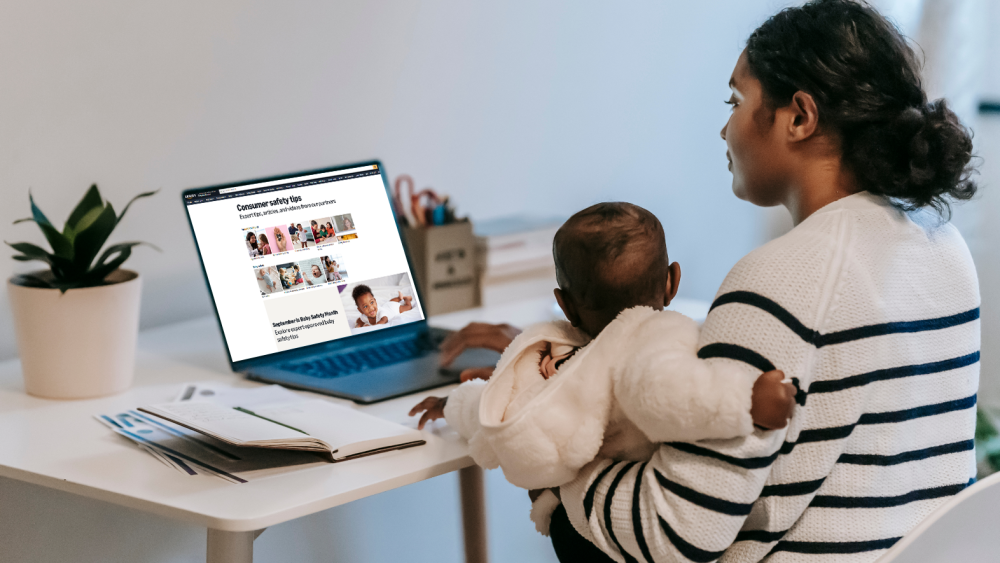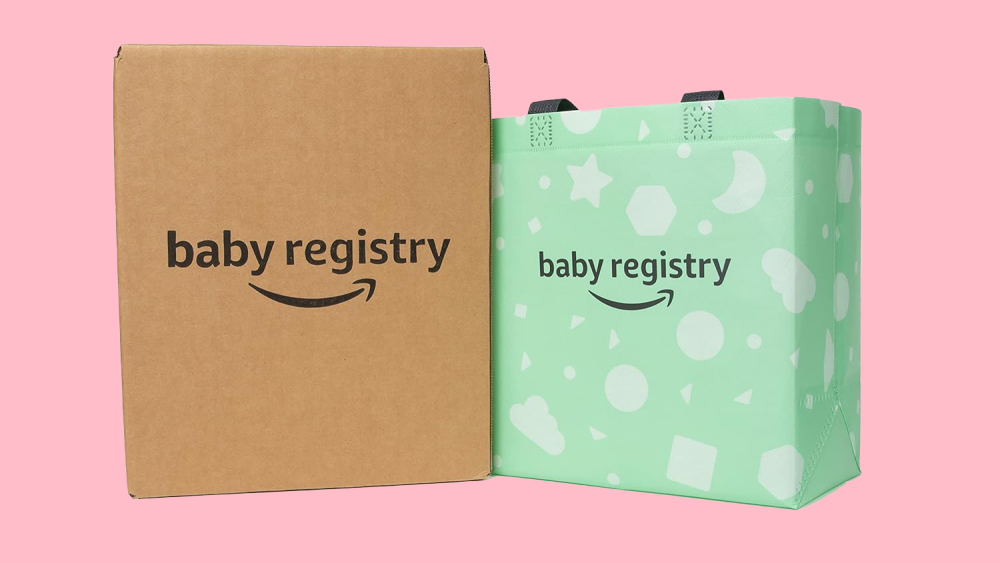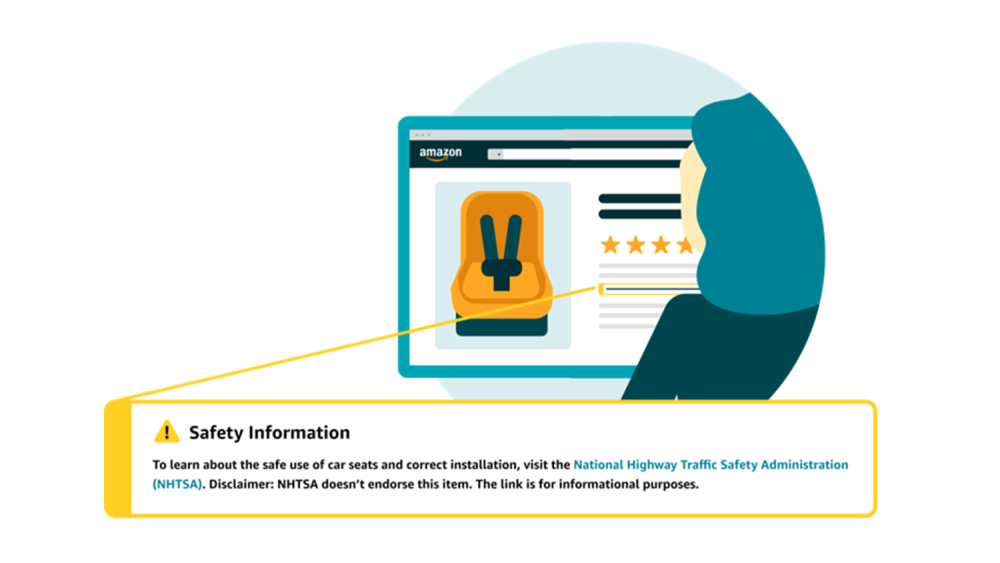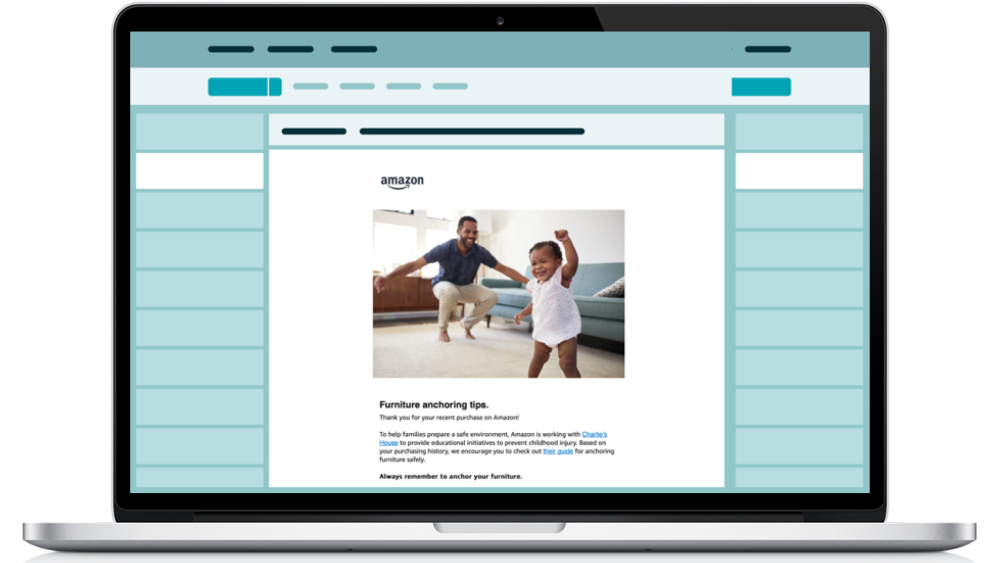Safe sleep, furniture anchoring, car seat safety, poison prevention, preventing falls—for parents and caregivers, the amount of baby safety information to stay up-to-date on can feel overwhelming. At Amazon, we collaborate to make safety information more accessible by amplifying tips for safe usage from safety organizations throughout the Amazon shopping experience. These tips are included on product pages, our baby registry homepage, our Consumer Safety Tips site, and in safety-related communications to customers who purchased relevant products.
By teaming up with the Juvenile Products Manufacturers Association (JPMA), the National Highway Traffic Safety Administration (NHTSA), Safe Kids Worldwide, Charlie’s House, Royal Society for the Prevention of Accidents, Electrical Safety First, and the Child Accident Prevention Trust, we are able to leverage Amazon channels to amplify and get consumers informative safety materials.
“By building this safety information into our shopping experience, we’re able to help expand the reach of these expert-approved tips,” said Rohan Oommen, vice president, worldwide trustworthy shopping at Amazon. “There is so much for new parents and caregivers to take in already. I’m inspired by all the ways this will help them as they prepare for their new chapter.”
Providing pre-purchase baby safety information throughout the shopping experience
Starting a baby registry can be an exciting time, but it can also bring many questions about what products to choose and how to use them. In the U.S., after Amazon customers create a baby registry in Amazon’s store, they can explore a checklist of recommended items to keep track of what they have and what they still need. Further down their registry homepage, they’ll find a link to the Consumer Safety Tips site with articles on how to choose and use safe baby products provided by safety organizations.
In the U.S., Canada, and the UK, consumers can access and browse product safety and usage information from safety experts. Tips on how to properly set up a crib for safe sleep, how to safely store and dispose of batteries, how to properly anchor furniture to avoid tip-overs, and other information are featured on these pages, with new tips added every month.
Once their registry is fully set up, the parents-to-be receive a welcome box with a surprise selection of full and sample-size products. Included in this box are pamphlets with safety tips and a QR code that links to the Safe Kids Worldwide and JPMA websites.
“Our collaboration with Amazon is making a difference in our shared mission to protect children from preventable injuries,” said Torine Creppy, president of Safe Kids Worldwide. “Safe Kids saw a significant increase in the number of parents and caregivers downloading our Baby Safety Guide and we’re excited to continue our work with Amazon to reach even more families with the expert information they need to keep their kids safe.”
Lisa Trofe, executive director of JPMA, echoed Creppy in affirming the value of the baby registry box tips. “Amazon is uniquely suited to deliver this important information as part of its baby registry boxes,” Trofe said. “Together, we’re reaching the right target audience with information that can prevent injuries and save lives among a vulnerable and precious population—babies.”
Outside Amazon’s baby registry, we also work with organizations to feature their safety information directly on product pages. For example, in 2024, we worked with NHTSA on their “Right Seat” campaign to integrate recommendations and installation tips onto car seat product pages—giving customers safety information to peruse before they make their decision.
Post-purchase baby safety information: Communicating with customers even after they’ve received their products
Once customers make their purchase and are ready to start using their new baby products, they can find it overwhelming to sort through all the safety information they receive.
In collaboration with safety organizations, Amazon sends emails containing safety information tailored to customers’ recent purchases, covering topics like baby safe sleep, furniture anchoring, and button batteries. For example, in support of NHTSA’s Child Passenger Safety Week campaign, Amazon customers who purchased car seats in the last year will receive an email with NHTSA’s safety tips and a link directing them to local places to get their car seat checked. For customers seeking additional information, we include links to resources and supplementary tips, including the Consumer Safety Tips site.
If a product a customer purchased is recalled, we inform them of the recall, remove the product from our store, notify the seller, and cancel any orders that have not yet been removed from our inventory. In 2023, Amazon launched the Your Recalls and Product Safety Alerts page (RPSA) in the U.S., providing customers with a single place where they can view product recalls, safety information, and next steps for items they purchased in Amazon’s store. RPSA is now available in all our stores globally. If a customer is not happy with the condition of their purchase or a timely delivery, and can’t resolve the issue directly with the seller, they can leverage Amazon’s long-standing A-to-z Guarantee and contact us for a refund. In 2021, we expanded our A-to-z Guarantee in the U.S. to include a streamlined process for resolving personal injury or property damage claims due to a defective product.
We also go beyond our store and our inventory, looking for better controls and policies that can more effectively protect consumers in the future. For example, we proactively removed padded crib bumpers and inclined sleep products from our stores before legislation passed. We then worked with Consumer Reports, Consumer Federation of America, and Kids in Danger to advocate for the Safe Sleep for Babies Act, which was then signed into law in the U.S. in 2022.
At Amazon, we collaborate with baby safety organizations to help connect consumers with safety tips, giving parents and caregivers the information they need to use their new products with confidence. Integrating baby safety information throughout the shopping journey, supporting customers with safety information even after they’ve made a purchase, and looking outside our store for more opportunities to improve controls and policies are just some of the ways we continue to work towards a world that’s safer for everyone.
For more on Amazon’s product safety efforts, visit our Product Safety page.





